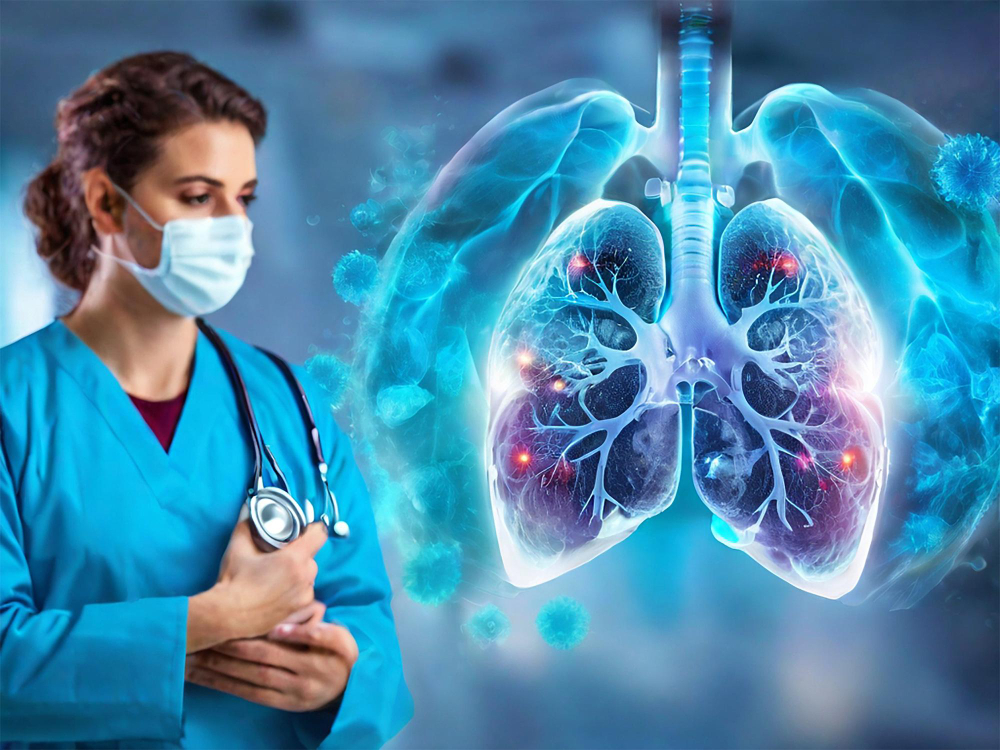Introduction
Lung cancer is one of the most serious and prevalent forms of cancer globally, responsible for a high mortality rate. Despite advancements in medical technology, early detection remains a challenge. Understanding the risk factors, recognizing the symptoms, and knowing the treatment options are critical steps in combating this disease. This blog provides a comprehensive overview of lung cancer, focusing on its risk factors, symptoms, and treatment strategies to improve early diagnosis and management.
Risk Factors for Lung Cancer
Lung cancer risk is influenced by several factors, many of which are modifiable. Identifying these factors can help in both prevention and early detection:
- Smoking: The primary risk factor for lung cancer, smoking accounts for approximately 85% of all cases. Both active smoking and exposure to secondhand smoke significantly increase the risk. The carcinogens in tobacco smoke cause genetic mutations in lung cells, leading to cancer.
- Environmental Exposures: Exposure to certain environmental hazards can also elevate lung cancer risk. Radon gas, a naturally occurring radioactive substance, can accumulate in homes and increase cancer risk. Asbestos, a fibrous mineral used in construction and industrial applications, is another significant risk factor. Long-term exposure to air pollution, including diesel exhaust and industrial emissions, also contributes to increased risk.
- Genetic Factors: A family history of lung cancer can predispose individuals to the disease. Certain genetic mutations, such as those affecting the EGFR (epidermal growth factor receptor) gene, have been linked to lung cancer susceptibility. Genetic predisposition may interact with environmental exposures to further increase risk.
- Age and Gender: Lung cancer risk increases with age, particularly in individuals over 65. While historically more common in men, the incidence among women has risen, partly due to higher smoking rates and increased awareness.
- Pre-existing Lung Diseases: Chronic lung conditions such as chronic obstructive pulmonary disease (COPD) and previous tuberculosis infections can increase the likelihood of developing lung cancer. These conditions cause chronic inflammation and damage to lung tissues, making them more susceptible to cancerous changes.
Symptoms of Lung Cancer
Lung cancer may not present noticeable symptoms in its early stages, which complicates early detection. Common symptoms include:
- Persistent Cough: A cough that persists for more than a few weeks or worsens over time. It may be accompanied by blood or rust-colored sputum.
- Chest Pain: Ongoing pain or discomfort in the chest that may be linked to breathing or coughing. This pain can be sharp or dull and might worsen with certain movements.
- Shortness of Breath: Difficulty breathing or a feeling of breathlessness that becomes progressively worse. This may be due to tumor growth obstructing airways or fluid accumulation in the lungs.
- Hemoptysis: Coughing up blood or blood-streaked sputum, which can be an alarming symptom indicative of advanced disease.
- Unexplained Weight Loss: Significant and unexplained weight loss can occur as the cancer affects overall health and appetite.
- Fatigue: Persistent and debilitating tiredness that does not improve with rest. This can be a sign that cancer is affecting overall health and energy levels.
Diagnosis and Treatment Options
Early diagnosis of lung cancer is essential for effective treatment. Various diagnostic tools and techniques are employed:
- Imaging Tests: Chest X-rays, CT scans, and PET scans are commonly used to identify abnormal growths in the lungs. These imaging techniques help visualize the size, shape, and location of tumors and determine if cancer has spread to other areas.
- Biopsy: A biopsy involves taking a small sample of lung tissue to examine for cancer cells. This can be done through various methods, including bronchoscopy (using a flexible tube inserted into the airways), needle biopsy, or surgical biopsy.
- Molecular Testing: Identifies specific genetic mutations or biomarkers associated with lung cancer. This testing can guide treatment decisions, such as the use of targeted therapies.
Treatment options for Lung Cancer
Surgery: Surgical options include lobectomy (removal of a lobe of the lung), wedge resection (removal of a small part of the lung), and pneumonectomy (removal of the entire lung). Surgery is often recommended for early-stage lung cancer.
- Radiation Therapy: Utilizes high-energy rays to target and destroy cancer cells. It can be used as a primary treatment for non-surgical candidates or as an adjunct to surgery.
- Chemotherapy: Involves the use of drugs to kill cancer cells or stop their growth. Chemotherapy is typically used for advanced stages of lung cancer or when cancer has spread beyond the lungs.
- Targeted Therapy: Focuses on specific molecular targets involved in cancer cell growth. Targeted therapies can be effective in treating cancers with specific genetic mutations.
- Immunotherapy: Boosts the body’s immune system to recognize and fight cancer cells. Immunotherapy is a promising treatment for certain types of lung cancer and is used in cases where other treatments may not be effective.
Visit BLK-Max Super Specialty Hospital, Delhi for treatment.
Conclusion
Lung cancer remains a significant health challenge, but understanding risk factors, recognizing symptoms early, and exploring treatment options can improve outcomes. If you or someone you know is experiencing symptoms or is at high risk for lung cancer, consulting with a healthcare professional is crucial. For comprehensive support and expert guidance in managing lung cancer, contact DocTrePat to navigate the complexities of diagnosis and treatment effectively.

